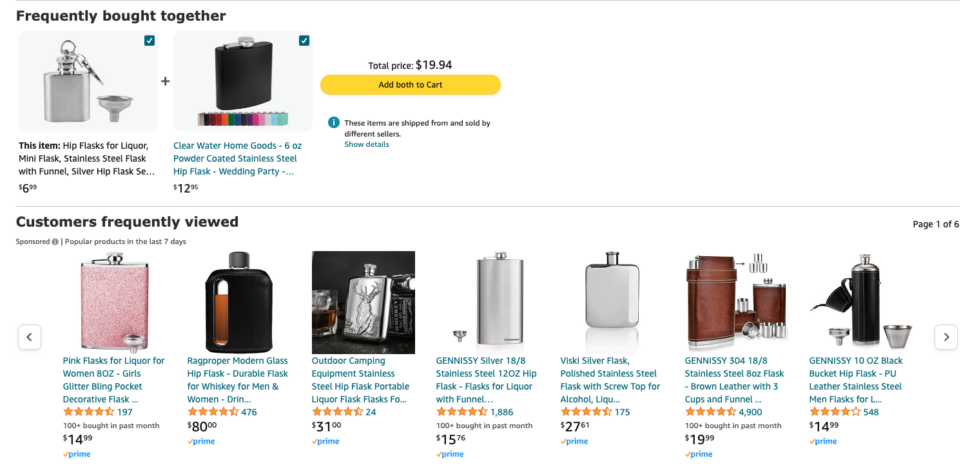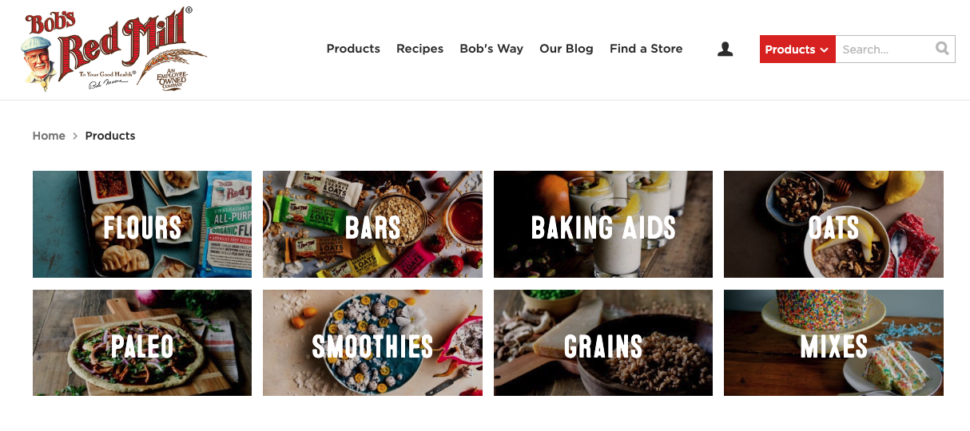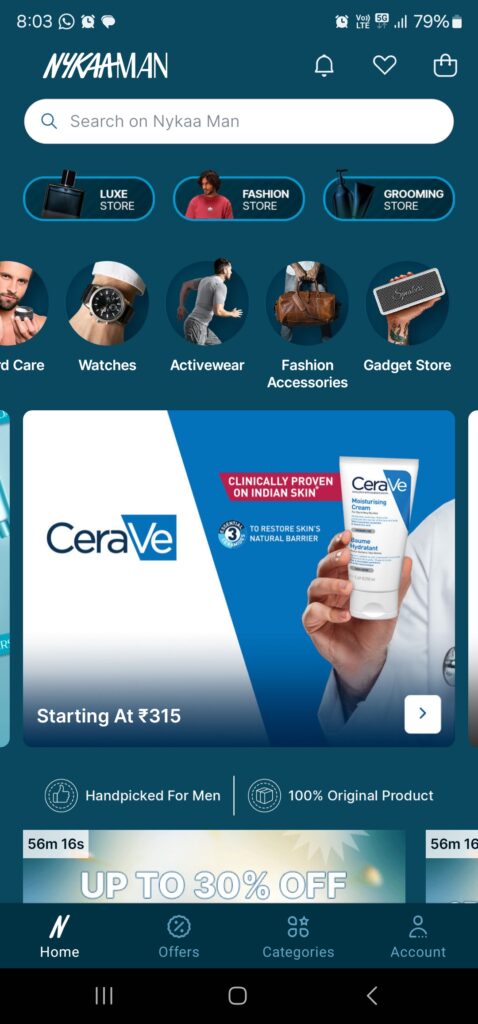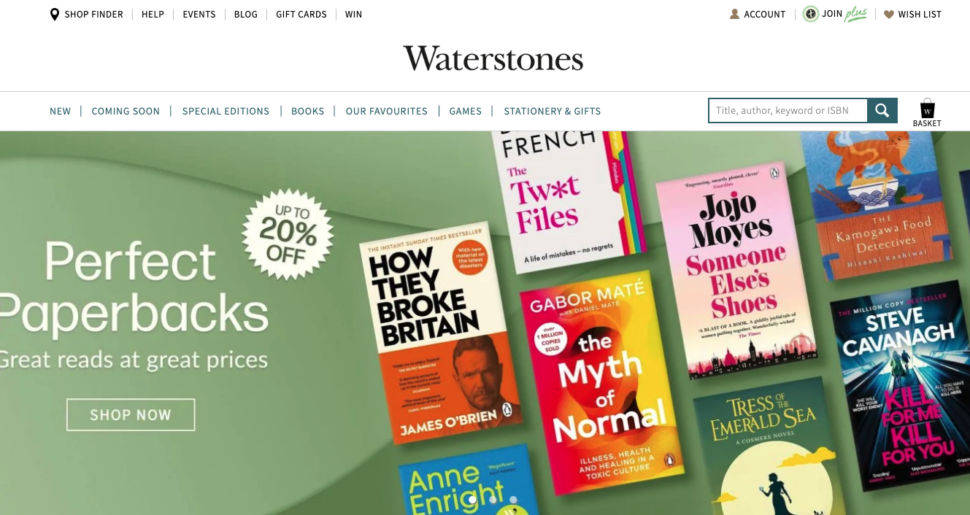Are you looking for the key to making your brand stand out in a competitive e-commerce space?
If so, you need to understand and properly leverage the concept of a digital shelf. A virtual shelf that “holds” your products online will directly impact your visibility, brand image, and sales.
This post will cover what a digital shelf is and how to optimize it. By the end of this article, you’ll have practical tips for creating consistent, attractive digital shelves – helping you build your brand, sell more products, and win over customers.
What is a digital shelf?
A digital shelf is any online touchpoint where customers can discover, browse, and buy products. Digital shelves include apps, online stores and marketplaces, websites, and even social media platforms. Think of Amazon, Facebook Marketplace, Etsy, or PetSmart’s website.
These sites resemble a physical product shelf in a brick-and-mortar store, but in an online setting. Anyone with internet and a smartphone or computer has access to millions of storefronts and virtual shelves at any time.
Just like stores have aisles and product displays, a digital storefront has categories, subcategories, and featured product displays. Your product is shown alongside similar, competing products, as they typically would be in a physical store.
Physical stores have a well-established set of best practices for product and shelf placement, lighting, sounds, signage, and other factors. This is visual merchandising, which helps customers navigate a store while finding what they need easily.
Similarly, digital shelves and stores must follow best practices in UX (user experience) and online navigation to influence customers’ purchasing behavior and stand out. For example, you could improve your pricing and product pages, carry out search engine optimization (SEO), and meet other benchmarks for digital shelf performance.
The importance and impact of your digital shelf
The reality is that online selling is a significant part of all retail and commerce activities today.
Statista claims that retail e-commerce sales worldwide will surpass $6.3 trillion USD in the next few years – and it will only keep growing. 43% of U.S. consumers prefer shopping online instead of in-store.
Your digital shelf experience plays the most critical role in your online success, so it’s important to continually optimize it.
Customers make unconscious buying decisions all the time. As a marketer, designer, or entrepreneur, your role is to figure out the key factors or triggers that increase the chances of customers buying your products online.
To do this, personalize your online shopping experiences across platforms using digital shelf analytics and testing. You need to rely on user preferences, behavior, and other data to shape your digital shelf strategy.
Amazon does this well. It creates dynamic homepages for each customer based on their past actions. You’ve probably seen the “Keep shopping for” and “Deals for you” suggestions on Amazon, where it recommends products you browsed previously. This kind of data-driven personalization will help drive more conversions on your product page.
Finally, consider how important mobile phones are in e-commerce. Another study by Statista found that over 50% of all retail sales in 2023 took place through mobile – that’s $1.7 trillion in revenue. This makes it important to manage your virtual shelf seamlessly across platforms.
It’s clear that digital shelf optimization is necessary to thrive in modern e-commerce, due to the large shift in customer behavior from buying in-store to online. Now, let’s take a look at our top considerations for building your digital shelf.
Key considerations when creating a digital shelf
The real reason you should care about your digital shelf is that it impacts brand loyalty and can help you win lifelong customers.
Just as consumers often have favorite brands and products they’ve used for years, your digital shelf can create loyalty by providing an amazing UX and shopping experience.
Amazon is a clear example of a successful digital shelf that dominates the e-commerce space and is most consumers’ go-to shopping destination.
A big reason for this is because Amazon cleverly maps its UX to people’s intuitive behavior when they research a product.
Imagine you’re looking for the perfect mini flask. You search on Amazon and click on a product listing to start researching. Next, you likely scroll down automatically to find similar and relevant products, which Amazon conveniently lists as part of the product page experience. Small experiences like this have a disproportionate impact on conversions and is why Amazon thrives.
Now, we know you’re not Amazon – but you can use similar strategies and other tactics for improving your own brand’s website or storefront, as well as your individual product listings.
Let’s explore more factors that will impact the success of your digital shelf.
Visual presentation
Online shoppers “experience” your products through text and imagery and make a decision based on what they see and read online, since they can’t physically handle the products before buying them.
That means your product images, descriptions, and reviews need to do the heavy lifting to attract shoppers and position your products as the best option.
Here’s an example of how your website images can impact buying decisions. Something as simple as the picture background and angle can create context and induce viewers to buy.
Invest in a professional photographer’s skills to get the best results. Use high-quality images with higher resolutions to increase their chances of driving clicks and conversions. You can also compare your product images using PickFu to see which version people in your target audience like best before you launch it.
Omnichannel presence and integrations
It’s said that a brand must create at least eight touchpoints before customers buy a product.
It makes sense that the more a customer sees your product and becomes familiar with it, the more likely they are to buy it.
This is why online retailers should have digital shelves on multiple platforms or marketplaces. When you’re present in more online spaces, you’re more likely to increase sales as audiences are dispersed across different channels.
Your digital shelf strategy should focus on creating visibility by selling on Amazon or Temu, TikTok Shop, Instagram, and/or your own e-commerce site (based on which marketplaces make the most sense for your product).
An omnichannel approach will ensure you’re present on key retailer websites and drive product visibility.
Consistency in branding
It isn’t enough to create multiple digital touchpoints for your products if their appearance isn’t consistent.
Your customers must encounter a unified brand message and aesthetic whether they’re on your app or a retailer’s site. You can do this by using the same brand images, product details, retail packaging design, and product descriptions across all platforms.
So whether you’re selling products like books on Amazon or your own website, your consistent branding will build trust and recognition as customers come across your digital shelves online.
Search engine and platform optimization
A meaningful digital shelf strategy needs to include search engine optimization (SEO) as well as platform optimization. What does this mean in an e-commerce context?
- Do keyword research: include keywords customers might use to find your products. Use long-tail keywords like “cute AirPod case with keychain” and not just “AirPod case.”
- Add clear product descriptions: provide clear and concise product descriptions that effectively communicate key features, benefits, and specifications. Use lists and include use cases and keywords naturally throughout the description.
- Use rich product content: include engaging content such as product videos, 360-degree views, and augmented or virtual reality if possible. Interactive elements are key to improving the product experience.
- Encourage customer reviews and ratings: integrate user-generated content like reviews and ratings to show both customers and search engines that your products are useful. A great way to ensure you get good reviews is by testing your website and products ahead of time and getting proactive feedback from your target audience.
These steps, plus using high-quality images, go a long way toward improving your digital shelf performance by making it discoverable.
Avoid “out-of-stock” situations
You can say that out-of-stock is out of mind for customers and Google!
John Meuller is the Search Engine Advocate for Google, and suggested that the platform could lower rankings for products that go out of stock.
And even if the product does come back on the shelf, it might not regain its ranking quickly.
This makes it important for you to get regular updates on your inventory and ensure that your product is in stock as much as possible. Use PIM (product information management) tools and DAM (digital asset management) platforms to collect, organize, and share relevant information.
These tools ensure that all product listings have the same information and support consistent branding.
Personalization
Customer relationships and brand loyalty become stronger when you personalize your digital shelf for your target audience.
You can leverage automation in your online stores to offer better customer experiences. Implement algorithms to suggest relevant products to customers based on their behavior, purchase history, and preferences.
You can also add details like comparison tables, before-and-after images, or recipes to your product descriptions on third-party platforms.
An increase in personalization could increase ROI by up to 30% and reduce customer acquisition costs by 50% – so make any effort you can to create tailored experiences for your audience.
Enhanced user experience
How customers interact with your digital shelf depends on various elements, each contributing to a cohesive user experience.
Here are the main elements you should improve or optimize:
- User-friendly navigation: Ensure that customers can find what they’re looking for by creating navigation with intuitive search and filtering options. Test your navigation choices using A/B testing and getting user feedback.
- Mobile optimization: Create a seamless experience across devices by optimizing for mobile screens and tablets. Using responsive themes will help achieve this. Also, take care of your mobile checkout process to increase conversion rates.
- Performance and speed: Fast loading times mean users stay on your virtual shelf and browse your offerings. Use a flexible hosting option so you can accommodate increased traffic without compromising performance.
You can read in detail about how to optimize your digital shelf here. You’ll also learn how to use data to boost your digital shelf performance – driving more conversions and ranking on the first page of search engine results.
Examples of great e-commerce stores
Let’s get some inspiration from others by looking at a few examples of e-commerce stores.
1. Bob’s Red Mill
This brand showcases a clear understanding of its audience’s needs and the nature of its industry.
Bob’s Red Mill’s online store uses categories as the first thing people see when visiting their product page.
Customers can navigate instantly to any product they need. Bob’s Red Mill also features new products and individual products for shoppers who will likely browse before choosing what they need. This brand has successfully transferred its physical and in-store experience to its digital storefront.
You can also check out their products on Amazon to see how they use the same or similar pictures and product data across platforms.
2. Nykaa Man
Another interesting example of a digital shelf is Nykaa Man, an Indian retail platform dedicated to men’s lifestyle needs.
This platform stands out because of its consistent design between its app and website. It’s also clearly personalized towards its target audience and has user experience features like intuitive navigation and product categorization.
3. Waterstones
Waterstones is an online platform for buying books, and is a good example of digital shelf experiences applied to the book industry.
Book e-commerce stores need to optimize their digital presence to keep their audiences informed about the latest books. They must also personalize their email messaging, apps, and online content to reflect their diverse audience’s interests.
Waterstones has a dynamic e-commerce space featuring a mix of classic, popular, and new books. It also supports personalization by asking users to register for benefits and suggesting books related to a reader’s interests.
These e-commerce stores feature different but important aspects of a digital shelf. Looking at these and other examples in your space is a great way to get inspiration for improving your own virtual store.
Which key performance indicators (KPIs) should you track?
It’s essential to track KPIs to measure your digital shelf’s success. These metrics indicate how well your e-commerce store is performing and can help identify areas for improvement.
Some essential KPIs to track include:
- Conversion rate: this measures the percentage of website visitors who make a purchase. A high conversion rate indicates potential success, and helps you figure out if you should expand your business or if becoming an Amazon FBA seller is worth it.
- Average order value: this tracks the average amount a customer spends on each transaction. Increasing this metric can lead to higher revenue and profits.
- Bounce rate: a high bounce rate means that visitors are leaving your website without taking any action. Keeping this metric low is essential as it indicates a poor user experience.
- Cart abandonment rate: this measures the percentage of customers who add items to their cart but do not complete the purchase. A high abandonment rate could mean different things: you have hidden charges, your checkout process is slow, or something else.
- Share of search: this tracks the percentage of searches for your brand or product category compared to the total search volume. A higher share of search means more people are searching for and finding your digital shelf, which can lead to increased sales.
- Stock status: this reflects your store inventory management. Try to maintain adequate stock across platforms so you never get the “out of stock” sign. Tracking this metric will help you manage your supply chain and inventory.
These are the key metrics to inform you how your digital shelves are performing. Let’s look at ways to optimize these metrics next.
Tips for optimizing KPIs for the digital shelf
The most important way to optimize the KPIs mentioned above is to track your data with the right tools.
You should use Google Analytics and engage in Google shopping optimization to monitor your website and observe bounce rates, traffic, top pages, and more. SEO platforms like Ahrefs and Semrush or Amazon research tools will help you with keyword research and optimization.
Finally, one of the most important ways you can boost your performance is by testing various elements of your digital shelf. PickFu is a helpful do-it-yourself customer insights platform for carrying out A/B testing and getting audience feedback.
You get feedback faster with PickFu than you would from other research tools – results typically come back the same day, often within an hour. You can also use it to generate heat maps with Click Tests, highlighting your product image’s most compelling features, finding areas to improve, or seeing where consumers are most likely to click on a product search results page.
Doing proof of concept testing in the early stages and continually testing your product images, listing elements, website, and more will give you insight into your customers’ perceptions. It’s the closest you get to reading their minds and giving them exactly what they want – and therefore optimizing your conversions, sales, and other KPIs.
Optimize your digital shelf and transform your e-commerce business with PickFu
Hopefully now you understand the importance of optimizing your digital shelf and have a toolbox of tactics for driving conversions, increasing sales, and building a great e-commerce brand that you know will be worth it.
We highly recommend using a consumer insights platform like PickFu to help you in this process. With PickFu, you can gather user feedback and A/B test elements of your digital shelf – leading to better, data-driven decision-making for your product listings, images, and overall user experience.
Ready to see the difference that testing can make to your e-commerce business? Test your digital shelf with PickFu today and unlock the full potential of your online store!
FAQs
1. What is a shelf page?
A shelf page in the context of an e-commerce website is a webpage that displays a collection of products, similar to how items are presented on shelves in a physical store.
2. How can I improve my brand’s performance on the digital shelf?
Improving your brand’s performance involves continuous testing and optimization. Employ A/B testing to experiment with images, descriptions, and pricing strategies. Tools like PickFu can offer invaluable insights to help you make informed decisions that enhance the customer experience and boost sales.








